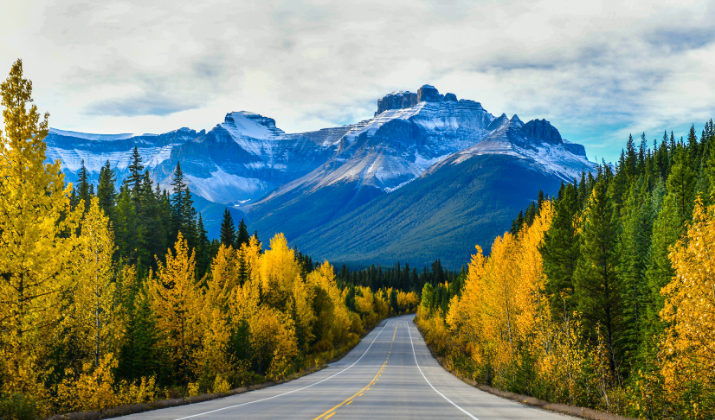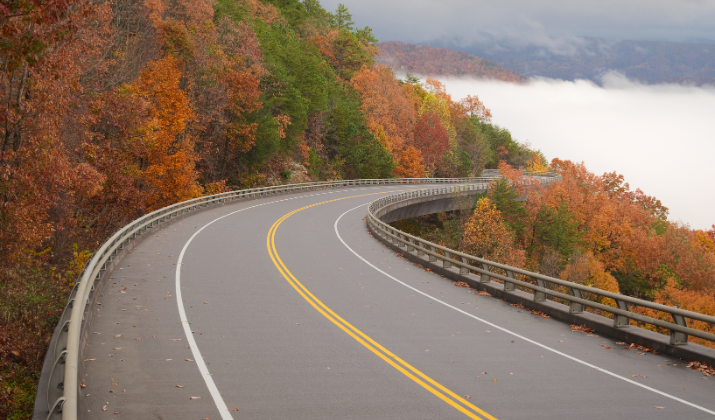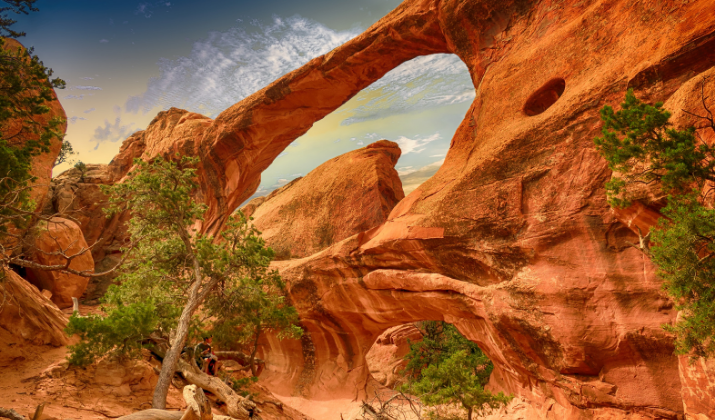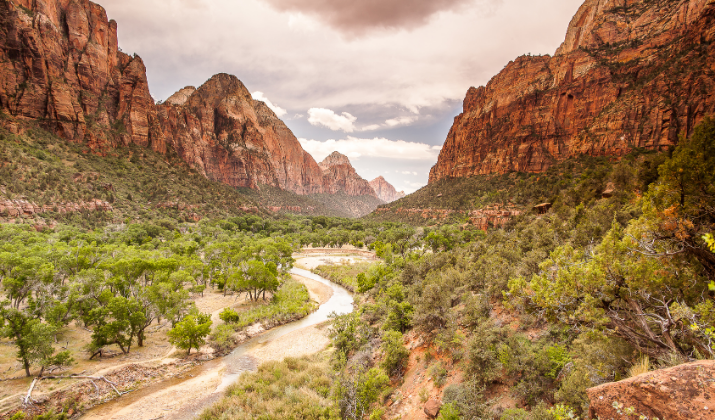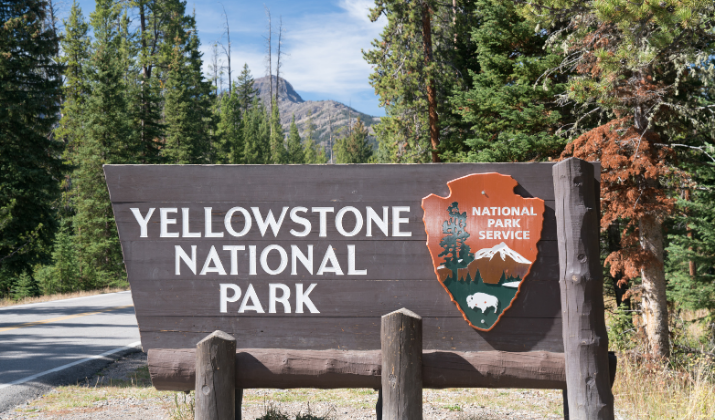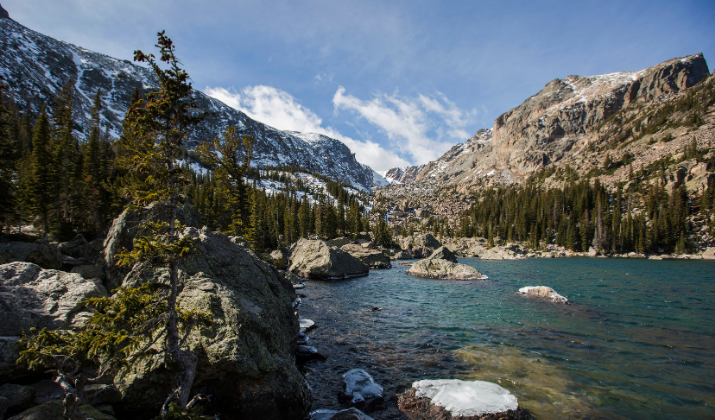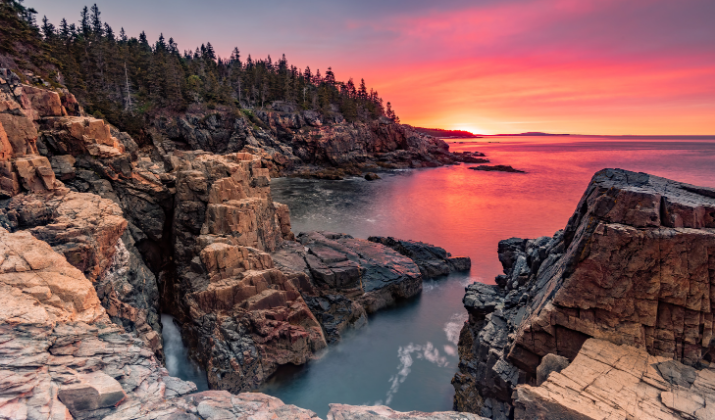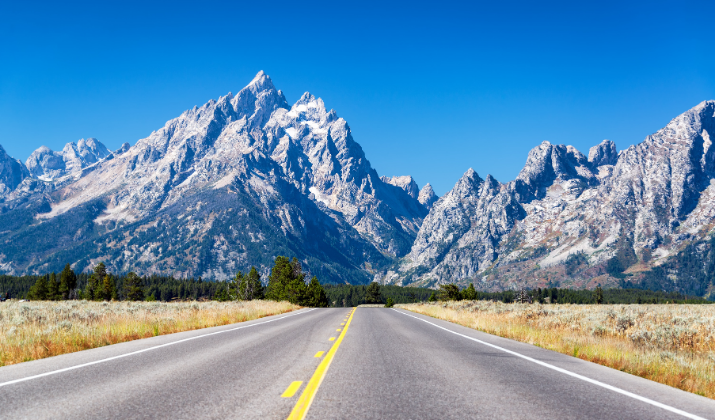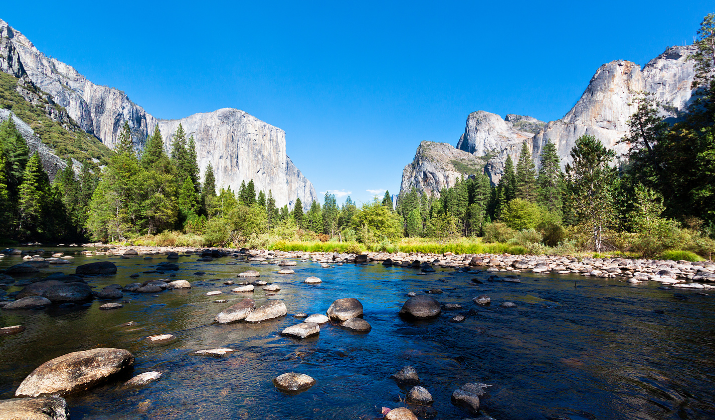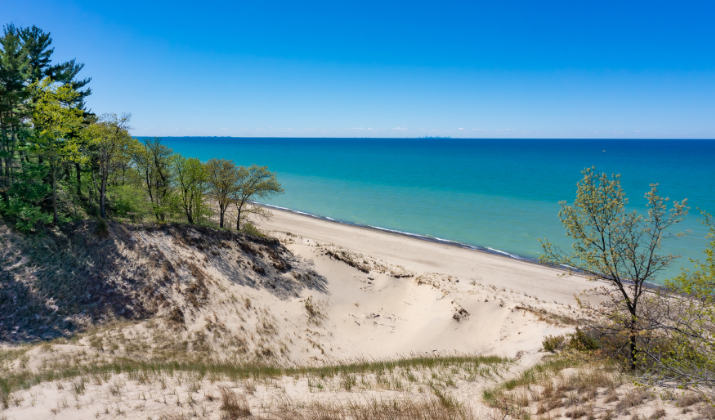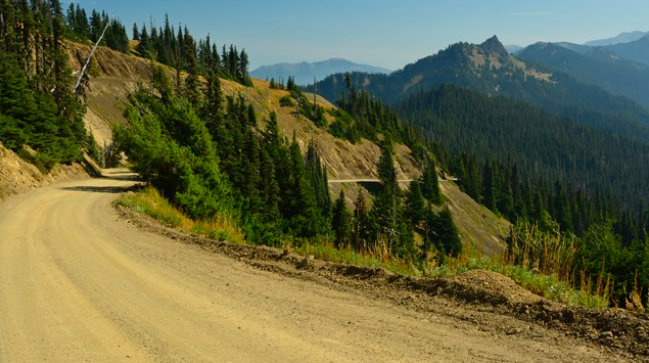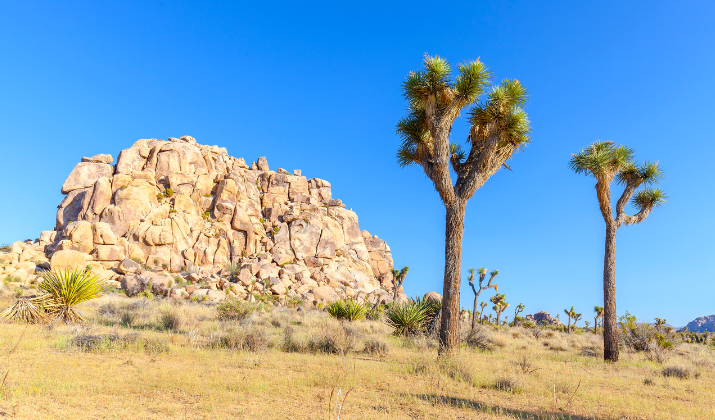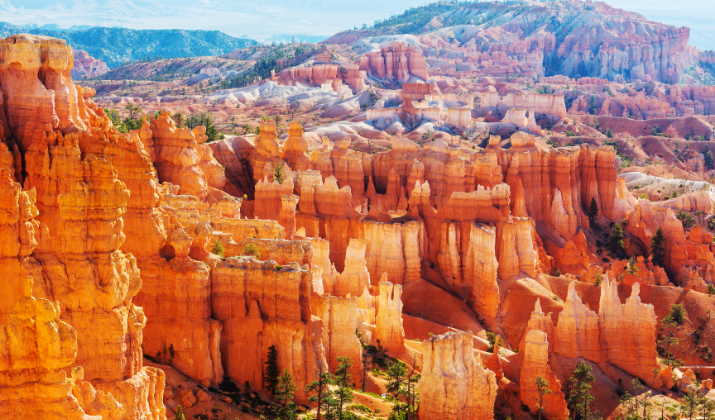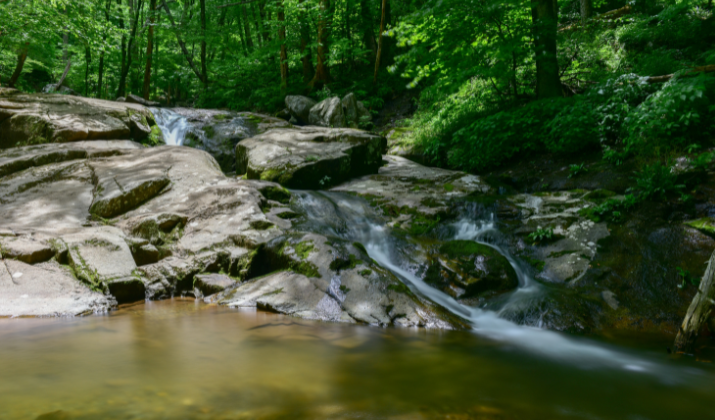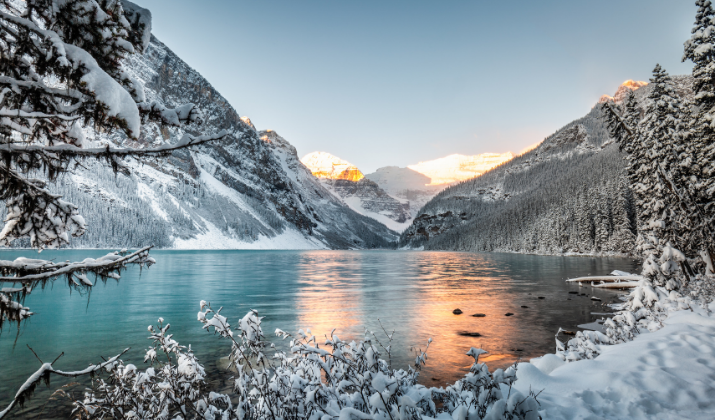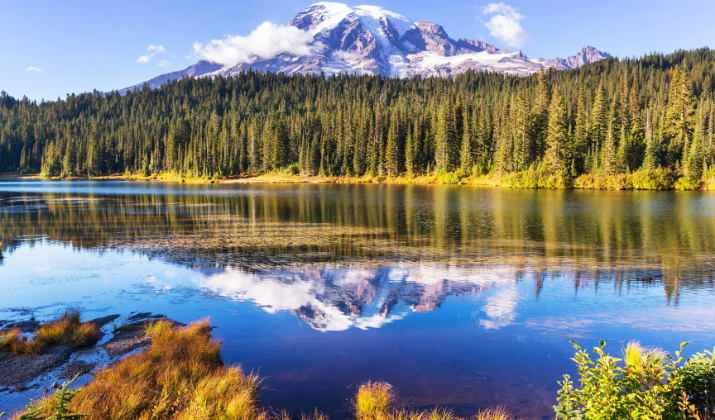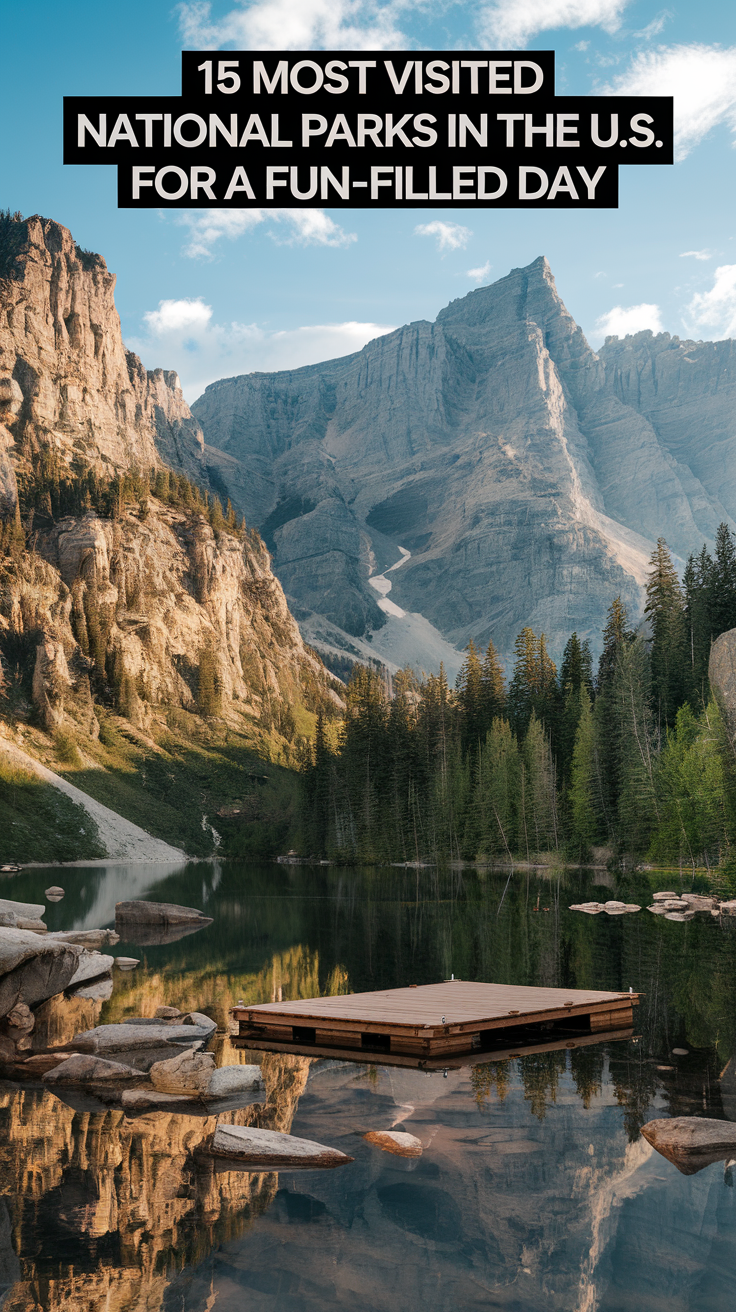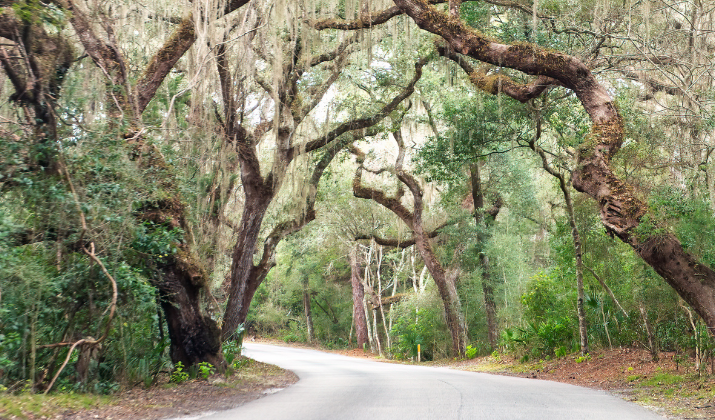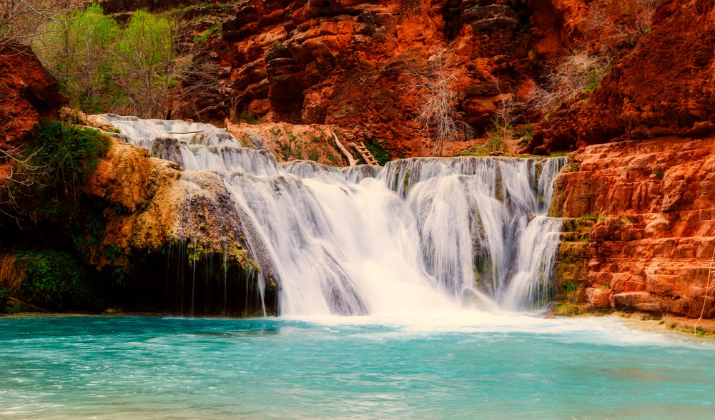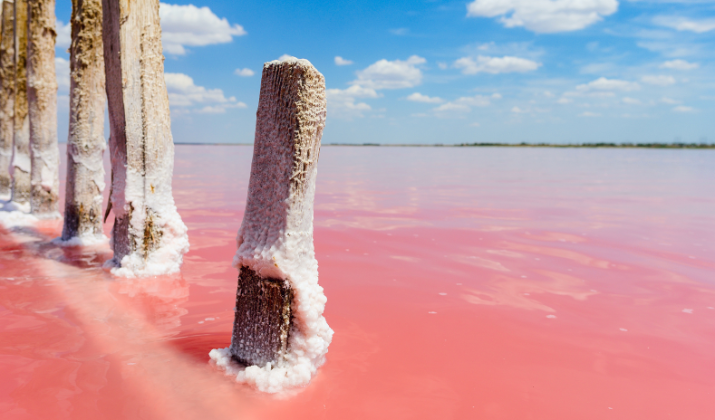The United States National Park System stands as one of humanity’s most remarkable achievements in conservation, preserving nature’s masterpieces for generations to come.
From the mist-shrouded peaks of the Appalachians to the sun-scorched deserts of the Southwest, these protected lands tell the story of our continent’s natural history.
As more people seek meaningful connections with nature, our national parks continue to provide sanctuary, adventure, and inspiration to millions.
This guide explores the fifteen most visited national parks, each offering unique landscapes, diverse ecosystems, and unforgettable experiences that showcase America’s natural heritage at its finest.
Let’s take a look.
1. Great Smoky Mountains National Park
Straddling Tennessee and North Carolina, this crown jewel of the Appalachian Mountains welcomes over 12 million visitors annually, making it America’s most visited national park.
The park’s 522,419 acres encompass some of the oldest mountains in the world, with elevations ranging from 876 to 6,643 feet.
The diverse landscape supports an incredible array of life, including 65 species of mammals, over 200 varieties of birds, and more than 1,600 flowering plant species.
The park’s extensive network of trails, including 71 miles of the famous Appalachian Trail, offers opportunities for every skill level.
History enthusiasts can explore over 90 historic structures, including preserved log cabins, churches, and grist mills, particularly in the popular Cades Cove area.
Seasonal highlights include the synchronous fireflies in late spring, vibrant wildflower displays from March through October, and spectacular fall foliage that peaks in October and early November.
2. Grand Canyon National Park
This legendary chasm in Arizona draws approximately 6 million visitors annually to marvel at its immense scale – 277 river miles long, up to 18 miles wide, and over a mile deep.
The Colorado River’s patient carving through nearly two billion years of geological history has exposed a rainbow of rock layers, each telling a different chapter of Earth’s past.
The South Rim, accessible year-round, provides the park’s most popular viewpoints and visitor facilities. Mather Point offers newcomers their first dramatic canyon vista, while Desert View Watchtower provides sweeping views of the eastern canyon and Painted Desert.
Hiking opportunities abound, from the challenging Bright Angel Trail’s 9.6-mile descent to the Colorado River to the more moderate South Kaibab Trail’s 3-mile round trip to Cedar Ridge.
The North Rim, open May through October, offers a more secluded experience with cooler temperatures and unique perspectives of the canyon.
Wildlife enthusiasts can spot California condors, bighorn sheep, and elk, while river rafting adventures along the Colorado provide an entirely different perspective of this natural wonder.
3. Zion National Park
Utah’s first national park welcomes about 5 million visitors annually to its stunning landscape of massive sandstone cliffs, narrow canyons, and emerald pools.
The park’s centerpiece, Zion Canyon, stretches 15 miles long and reaches depths of up to 2,640 feet. The famous Angels Landing trail challenges hikers with its steep ascent and chain-assisted final climb, rewarding brave souls with panoramic views of the canyon.
The Narrows, another signature hike, involves wading through the Virgin River between towering canyon walls sometimes only 20-30 feet apart. Kolob Canyons, in the park’s northwest section, offers a less-crowded alternative with crimson-colored cliffs and excellent hiking trails.
Spring brings rushing waterfalls and wildflower blooms, while fall colors paint the canyon in warm hues. The park’s free shuttle system provides easy access to major trailheads and viewpoints along the Zion Canyon Scenic Drive.
Rock climbing, canyoneering, and wildlife viewing opportunities abound, with possibilities to spot mule deer, bighorn sheep, and numerous bird species.
4. Yellowstone National Park
America’s first national park spans 2.2 million acres across Wyoming, Montana, and Idaho, drawing nearly 4 million visitors yearly to its otherworldly landscape.
The park sits atop a supervolcano, resulting in the world’s largest concentration of geothermal features – over 10,000 hydrothermal sites, including geysers, hot springs, mudpots, and fumaroles.
Old Faithful, erupting approximately every 90 minutes, remains the park’s most famous attraction, but the Grand Prismatic Spring’s rainbow colors and the limestone terraces of Mammoth Hot Springs offer equally spectacular sights.
The park’s rich wildlife includes the largest concentration of mammals in the lower 48 states, with free-roaming herds of bison, elk, and pronghorn antelope, plus grizzly bears, wolves, and countless smaller species.
The Grand Canyon of the Yellowstone River features dramatic waterfalls and colorful rock walls, while Yellowstone Lake, North America’s largest high-altitude lake, offers fishing and boating opportunities.
Five entrance roads provide access to the park’s major features, connected by the Grand Loop Road’s figure-eight configuration.
5. Rocky Mountain National Park
Colorado’s alpine wonderland attracts about 4 million annual visitors to its 415 square miles of mountain ecosystem.
The park’s elevation spans from 7,860 to 14,259 feet at Longs Peak’s summit, creating distinct life zones supporting diverse flora and fauna.
Trail Ridge Road, the highest continuous paved road in the United States, crosses the Continental Divide and provides access to alpine tundra ecosystems above 11,500 feet.
The Bear Lake area offers popular hiking trails to subalpine lakes, including Emerald Lake and Sky Pond, while the Wild Basin area provides more secluded adventures.
Summer brings extensive wildflower displays to alpine meadows, while fall heralds the elk rut, when bull elk compete for mates with distinctive bugling calls.
Winter transforms the park into a snow-sports paradise, with opportunities for skiing, snowshoeing, and winter wildlife viewing.
The park’s western side, including the Kawuneeche Valley, offers quieter experiences along the Colorado River’s headwaters.
6. Acadia National Park
Maine’s coastal gem encompasses 49,075 acres of Mount Desert Island and adjacent areas, attracting over 3.5 million visitors annually.
The park’s unique landscape combines granite peaks, rocky coastline, and dense forests shaped by glaciers and the Atlantic Ocean. Cadillac Mountain, at 1,530 feet, stands as the highest point on the North Atlantic seaboard, offering spectacular sunrise views and panoramic vistas of Frenchman Bay.
The park’s 45 miles of historic carriage roads, commissioned by John D. Rockefeller Jr., provide excellent opportunities for biking, walking, and horse-drawn carriage rides.
The Ocean Path trail follows the dramatic coastline past Thunder Hole, where waves crash into a narrow granite channel creating thunderous sounds and spectacular sprays.
Jordan Pond offers scenic dining at its historic house, while the Schoodic Peninsula provides a less-crowded mainland section of the park.
The park’s diverse habitats support a variety of wildlife, including harbor seals, peregrine falcons, and numerous seabird species.
7. Grand Teton National Park
Wyoming’s cathedral-like mountains rise abruptly from the valley floor, creating one of America’s most dramatic landscapes that attracts over 3 million visitors yearly.
The Teton Range, with its youngest and steepest peaks in the Rockies, includes eight peaks over 12,000 feet, crowned by the 13,775-foot Grand Teton.
The park’s 310,000 acres encompass pristine lakes, rushing streams, and diverse ecosystems supporting extensive wildlife. Mormon Row’s historic barns provide iconic photo opportunities with mountain backdrops, while the 42-mile Scenic Loop Drive offers numerous pullouts for wildlife viewing and photography.
Jenny Lake serves as a hub for hiking and boating activities, with trails leading to Hidden Falls and Inspiration Point. The Snake River winds through the park, offering world-class fly fishing and scenic float trips.
Autumn brings spectacular colors and active wildlife preparing for winter, while winter transforms the landscape into a quiet wonderland perfect for cross-country skiing and snowshoeing.
8. Yosemite National Park
California’s Sierra Nevada treasure spans 759,620 acres and welcomes about 3 million visitors annually to its glacier-carved valley and ancient sequoia groves.
Yosemite Valley, the park’s crown jewel, features iconic landmarks like Half Dome and El Capitan, towering granite monoliths that attract climbers from around the world.
Yosemite Falls, North America’s tallest waterfall at 2,425 feet, reaches peak flow in spring when snowmelt cascades down its three tiers.
The Mariposa Grove contains about 500 mature giant sequoias, including the Grizzly Giant, estimated to be 2,700 years old. Glacier Point Road leads to spectacular valley views, while Tuolumne Meadows provides access to the park’s alpine region with numerous hiking trails and rock climbing opportunities.
The park’s diverse ecosystems support over 400 animal species, including black bears, mule deer, and Sierra Nevada bighorn sheep.
Visitors can explore the park’s human history at the Yosemite Museum and learn about the area’s Native American heritage.
9. Indiana Dunes National Park
This unique park along Lake Michigan’s southern shore encompasses 15,000 acres of dunes, wetlands, prairies, and forests, drawing nearly 3 million visitors annually.
The park’s signature feature, Mount Baldy, stands as a 126-foot-tall “living dune” that moves a few feet each year. More than 50 miles of trails wind through diverse ecosystems, including the Succession Trail that demonstrates how plant communities evolve over time.
The park’s 15 miles of beach provide opportunities for swimming, sunbathing, and viewing the Chicago skyline across the lake. The Cowles Bog Trail leads through several distinct habitats, including the site where Henry Chandler Cowles conducted pioneering ecological studies.
The park’s biodiversity includes over 1,100 flowering plant species, making it one of the most botanically diverse parks in the system.
The restored Chellberg Farm and Bailly Homestead offer insights into the area’s cultural history, while the Paul H. Douglas Center provides environmental education programs.
10. Olympic National Park
Washington state’s diverse wonderland protects nearly a million acres of wilderness, encompassing three distinct ecosystems: glaciated peaks, temperate rainforest, and rugged Pacific coast.
The park receives over 2.5 million visitors annually who come to explore its unique landscapes. The Hoh Rain Forest, receiving up to 14 feet of annual rainfall, showcases massive western hemlock, Sitka spruce, and big leaf maple trees draped in moss and ferns.
Hurricane Ridge provides accessible alpine terrain with panoramic views of the Olympic Mountains and opportunities to spot Olympic marmots, found nowhere else in the world.
The park’s 73 miles of wilderness coast feature rocky headlands, tidepools teeming with marine life, and remote beaches strewn with massive drift logs. Ruby Beach’s sea stacks and sunset views make it one of the park’s most photographed locations.
The Sol Duc Valley offers old-growth forests, subalpine lakes, and the popular Sol Duc Falls, while the Elwha River area demonstrates one of the largest ecosystem restoration projects in National Park Service history.
11. Joshua Tree National Park
Where the Mojave and Colorado deserts meet in Southern California, this 795,156-acre park attracts about 2.5 million visitors annually with its otherworldly landscape of twisted Joshua trees and massive granite monoliths.
The park’s unique geology results from ancient granitic plutons exposed through erosion, creating world-renowned rock climbing opportunities with over 8,000 established routes.
The higher, cooler Mojave Desert supports the park’s namesake Joshua trees, while the lower Colorado Desert features ocotillo, cholla cactus gardens, and seasonal wildflower displays.
Keys View provides panoramic vistas of the Coachella Valley, San Andreas Fault, and Mexico’s Signal Mountain. Historic sites like Keys Ranch tell stories of early settlers, while the Barker Dam area showcases both natural and cultural history.
The park’s dark skies make it a premier stargazing destination, and its varied ecosystems support diverse wildlife, including desert bighorn sheep, kangaroo rats, and numerous bird species.
12. Bryce Canyon National Park
Utah’s geological amphitheater welcomes over 2 million visitors yearly to witness its collection of colorful limestone spires called hoodoos.
Despite its name, Bryce Canyon is actually a series of natural amphitheaters carved into the eastern edge of the Paunsaugunt Plateau.
The most concentrated collection of hoodoos in the world creates a surreal landscape, especially during sunrise and sunset when the red, orange, and white rocks seem to glow from within.
The 18-mile scenic drive provides access to 13 viewpoints, while the Rim Trail offers interconnected paths between Fairyland and Bryce Points.
Queens Garden/Navajo Loop combination trail provides the best way to experience the hoodoos up close. At elevations ranging from 6,620 to 9,115 feet, the park offers excellent stargazing opportunities and hosts astronomy programs.
Winter brings a different perspective as snow contrasts with the red rocks, and cross-country skiing and snowshoeing become popular activities.
13. Shenandoah National Park
Virginia’s Blue Ridge Mountain sanctuary extends 105 miles along Skyline Drive, attracting about 2 million annual visitors to its cascading waterfalls, quiet woods, and panoramic vistas.
The park’s 200,000 acres protect part of the Appalachian Mountain chain, with elevations ranging from 598 to 4,049 feet. Skyline Drive’s 75 overlooks provide views of the Shenandoah Valley to the west and the rolling Piedmont to the east.
The park contains over 500 miles of trails, including 101 miles of the Appalachian Trail, with popular waterfall hikes to Overall Run Falls and White Oak Canyon.
Big Meadows area offers rare high-elevation meadow habitat, historic lodges, and excellent wildlife viewing opportunities.
The park’s rich history includes the story of its creation, when hundreds of mountain residents were displaced to establish the park in the 1930s. Fall brings spectacular foliage displays, while spring showcases over 850 species of flowering plants.
14. Glacier National Park
Known as the “Crown of the Continent,” this Montana wilderness encompasses over a million acres of pristine ecosystem, drawing nearly 2 million yearly visitors.
The park features over 700 lakes, 175 named mountains, and 26 remaining glaciers. The legendary Going-to-the-Sun Road, a 50-mile engineering marvel, crosses the Continental Divide at Logan Pass, providing access to spectacular alpine scenery.
The Highline Trail offers one of America’s most scenic hikes along the Garden Wall, while the Grinnell Glacier trail leads to one of the park’s most accessible glaciers.
Many Glacier area, known as the “Switzerland of North America,” provides excellent wildlife viewing opportunities, including grizzly bears, mountain goats, and bighorn sheep.
The park’s western valleys contain ancient cedar-hemlock forests, while the eastern side features dramatic interactions between mountains and plains.
Lake McDonald, the park’s largest lake, reflects mountain peaks in its crystal-clear waters and provides opportunities for boat tours and kayaking.
15. Mount Rainier National Park
Washington’s iconic volcano rises 14,411 feet above sea level, creating its own weather systems and supporting vast ecosystems that attract about 1.5 million annual visitors.
The park protects 236,381 acres of diverse landscape, including 26 major glaciers, alpine meadows, and ancient forests. Paradise area, at 5,400 feet elevation, serves as a hub for visitor activities and features spectacular wildflower meadows in summer.
The Skyline Trail provides close-up views of the mountain and its glaciers, while the Grove of the Patriarchs showcases thousand-year-old Douglas firs and western red cedars.
Sunrise, the highest point in the park accessible by car at 6,400 feet, offers dramatic views of the volcano and surrounding Cascade peaks.
The park’s extensive trail system includes 93 miles of the Wonderland Trail circumnavigating the mountain.
The Carbon River area receives significant rainfall, creating a rare inland temperate rainforest, while Ohanapecosh showcases old-growth forest and hot springs.
Planning Your Visit
- Best Time to Visit: Each park has its peak season, typically summer months. However, shoulder seasons (spring and fall) often provide better weather and smaller crowds.
- Accommodations: Options range from campgrounds to lodges within the parks, plus nearby towns offer additional choices.
- Entrance Fees: Consider purchasing an America the Beautiful Pass for $80, which provides access to all national parks for one year.
- Safety: Always check weather conditions, bring appropriate gear, and follow park guidelines for wildlife encounters and trail safety.
Conclusion
America’s national parks represent more than just protected wilderness areas, they are living museums, outdoor classrooms, and sanctuaries for both wildlife and the human spirit.
As we face increasing environmental challenges and urbanization, these parks become even more crucial as bastions of biodiversity and natural heritage.
Whether you’re seeking adventure, education, spiritual renewal, or simply a peaceful escape from daily life, these 15 most visited national parks offer experiences that can transform perspectives and create lasting memories.
By visiting responsibly and supporting conservation efforts, we ensure these natural wonders remain pristine for future generations to explore and cherish.
Remember, every visit to a national park is not just a vacation, it’s an investment in preserving America’s natural legacy and an opportunity to connect with the raw beauty that has inspired generations of conservationists, artists, and adventurers.


